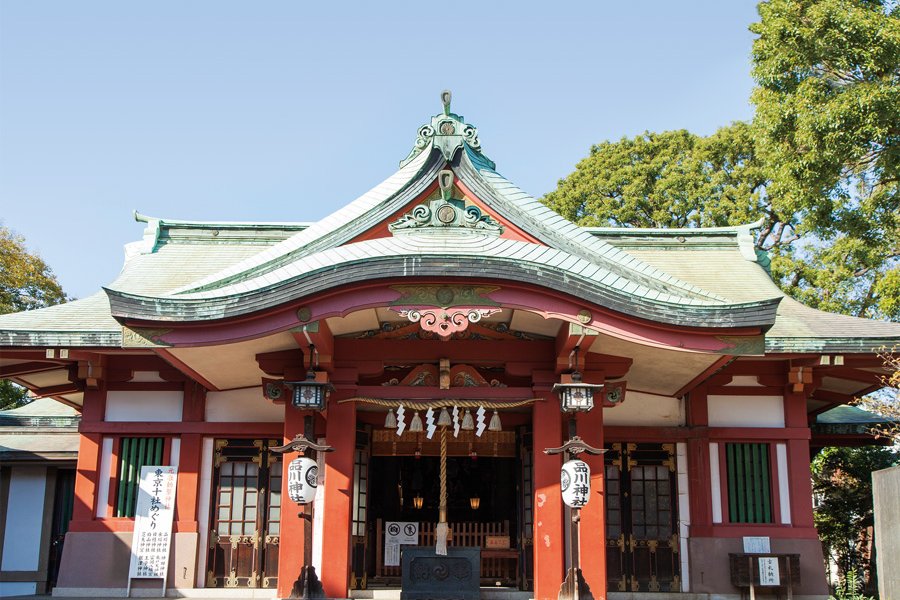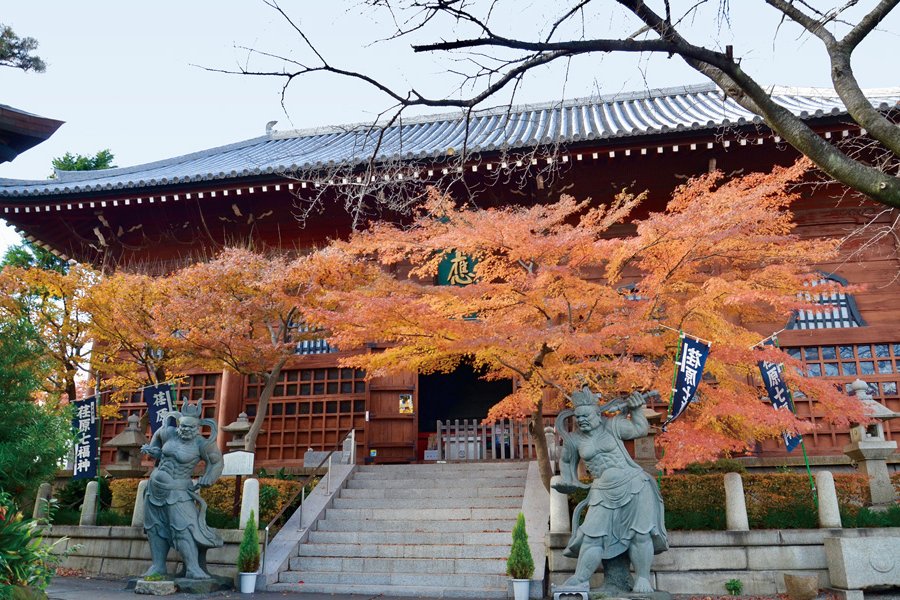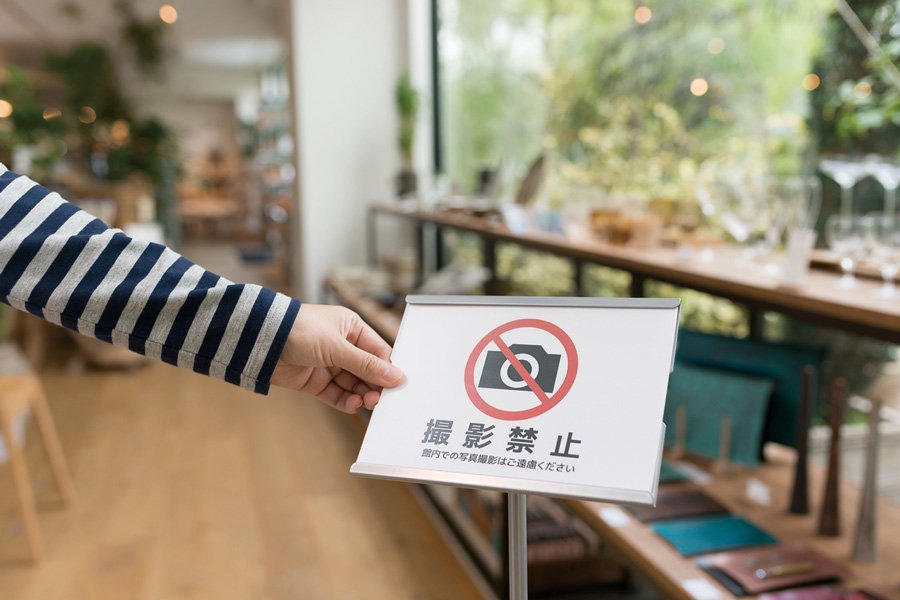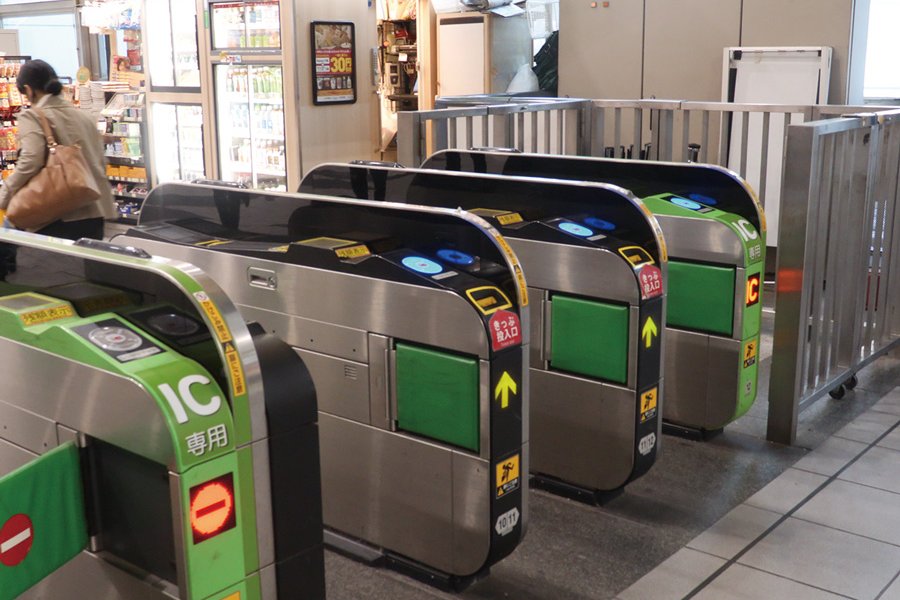Guide to Manners in Japan
How to ensure a successful trip and other etiquette rules
Supported by Shinagawa CitySightseeing
Useful information on how to visit sightseeing sites or locations of cultural importance.


Manners & Rules
No Touching!
Be careful when visiting sacred cultural properties, like shrine/temple buildings or Buddhist statues, and avoid touching or damaging these structures or nearby artifacts. Please don't pick flowers or plants at these sacred sites, and respect the animals that may gather there.
Keep Quiet
Since ancient times, temples and shrines have been used as holy places of worship. During your visit, please be considerate and respect those around you by keeping volume levels to a minimum.
No Smoking! (Unless Authorized)
Smoking is forbidden in many facilities, courtyards at sacred sites and gardens, as well as on the street. Please smoke in designated smoking areas.
Tip!

Carry Cash (and some Coins)
When visiting a shrine/temple, spare change is vital to make a prayer offering. During festivals, many food stand vendors may not accept credit cards so having cash (Japanese yen) is essential.

Stamp Book
If you visit a temple or shrine to pray, you can pay a small fee to receive a “go-shuin,” a vermilion stamp that signifies that you prayed there.
A Note on Using Drones in Japan
Drone-use is strictly prohibited in Japan, especially around urban/residential areas, sightseeing spots and religious sites. Please contact the facility in advance if you wish to request permission to film, and accept that in many cases it may not be possible to do so at all.
Quick Guide: Etiquette Rules for Visiting Shrines/Temples in Japan
Shinto shrines and Buddhist temples are different places of worship. Methods for worship also differ slightly, so be careful when praying.
1. Please enter from the front entrance
Shrine: Bow in front of the torii gate at the entry before entering the shrine. It is a rule that the middle of the shrine path be kept for gods and people walk on the sides.
Temple: In front of the temple gate, put your hands together before entering. Don’t forget to remove your hat.

2. Clean your hands in the purifying water
Near the entrance, you'll see a small area with water-filled basin: the chozuya. Scoop up some water with the ladle and pour the water on your left hand first, followed by your right. Next, fill your left hand with water and use it to rinse your mouth. Finally, use the remaining water to rinse the ladle’s handle for the next person.

3. How to pray
Shrine: Put money in the offering box and ring the bell. After bowing deeply twice, clap your hands in front of your chest twice, put your hands together and pray. Finally, bow deeply one last time.
Temple: Put in coins as an offering before the main worship hall, then quietly put your hands together in front of your chest and pray.

Before you go
Know before you go with this checklist:
- Check official festival dates in advance
- Try to arrange a map if possible
- Check if photos are allowed
- Don’t enter areas marked as “No Entry” (立入禁止 in Japanese).

Daily Life
Useful information on common rules when travelling around Japan.


Manners & Rules

Dispose of your trash
Japan is often considered very clean and hygienic. Everyone is generally careful to throw away their trash properly, or considerate enough to take it home if throwing away is not possible. Thanks to a strong recycling culture, it is easy to sort and throw away trash according to the type: burnables, plastic and PET bottles or cans. Be sure to respect this system and not leave your trash behind.

Photography Rules
Check whether there are any signboards or notices warning about photography. Even if photography is allowed, avoid using the flash in aquariums, racetracks or animal cases to ensure you don't cause the animals any undue stress.

Eating and drinking is not allowed at most facilities
Food and drink is prohibited at art museums, museums and aquariums. Make sure to visit the facility’s café or restaurant to enjoy a special menu item.

Toilet Etiquette
Wait in line to use toilet facilities, and try to keep them in good condition – only throwing away provided toilet paper in the toilet. Although there can be a lot of confusing buttons on modern electronic toilets, it can help to know the options for big flush (大) and small flush (小) if no English is mentioned.
Quick Guide: Yakatabune
A yakatabune boat experience allows you to enjoy delicious Japanese food, like tempura and sashimi, as you look across the waterfront. Cherry blossom-viewing and fireworks courses are especially popular, as the weather warms up in the spring and summer seasons. They typically come equipped with air-conditioning, heating and toilets.



1. Reservations are required
A shared cruise is available for small groups such as families or couples. Operating days for shared boats differ depending on the season, and there are also restrictions on the number of people, so be sure to make a reservation on the official webpage or by phone in advance.
2. Don't be late
If you miss the designated meeting time, you may find the boat will depart without you. Make sure to arrive on time!
3. Remove your shoes
Often there'll be a Japanese-style tatami room in the ship, but there are also boats with sunken table-style seating intended for international guests.
Before you go
Know before you go with this checklist:
- Check the entry fee and operating hours
- Check the event and exhibition schedule
- Try to find out which souvenirs are only exclusively available at the facility.
Eating
Useful information on how to dine in Japan without looking like a beginner


Manners & Rules

What is Otoshi?
Otoshi is a small dish that you receive at many izakaya-style Japanese restaurants prior to ordering – it is also treated like a discretionary service charge, usually adding around 500 yen each to your order (similar to a table charge).

Everyone Must Order
It is polite for each person to order something. Especially at lunch time when restaurants/cafes are crowded, refrain from taking up a whole table and only ordering one item. Check with the staff if you would like to share an item.

Chopstick Rules
Although at many places you can ask for a knife/fork, it helps to know the basic chopstick rules too. Don't stick your chopsticks upright in your rice, and don't pass food between chopsticks when sharing. Both these actions echo traditional funeral rites – not something you want to make people think of!
Order What You Can Eat
In Japan, it is always a courteous sign to the chef to finish the food you ordered, and not leave behind any waste. Try to order only what you can realistically finish – and you can always place another order later on in the meal.
Japanese 101
Before you start eating, it is customary to say "Itadakimasu!" (lit. I humbly receive). If you've enjoyed your meal and are feeling full at the end, saying "Gochisousama-deshita!" (lit. it was a feast!) to the staff will usually meet a smile from them. For more language tips, see our survival phrases.
No Tipping
Tips aren't expected and may even be returned out of confusion – as above, it is best to show your appreciation with a few comments in Japanese to let staff know you were satisfied.
Quick Guide: Food Tickets




1. Check the menu
Decide what you want to order from the menu or signboard in advance.
2. Put money in the machine
Bills and coins go in different places, so be careful.
3. Choose the button for what you want to eat
There are not many restaurants with multilingual meal ticket machines; if there are photos, use those for reference. If there are not any photos and you can’t read the writing, try choosing the top left option because standards and favorites are usually on the top left button.
4. Take the meal ticket and your change
Change may not come out automatically unless you press the “otsuri” button or lever on the ticket machine, so please be careful.
5. Give your ticket to a staff member
Give your ticket to a staff member and take a seat.
Feeling Stuck?
Ask a member of staff for their recommendation: "Osusume wa?"
Before you go
Know before you go with this checklist:
- Check the times for lunch and dinner in advance
- Check whether you can use credit cards or electronic money
- Tell your waiter about any foods you cannot eat when you place your order
- Check whether you need to make a reservation in advance
- Make sure to contact the restaurant if you will be late for your reservation.
Shopping
Useful information on some common shopping tips and rules to be aware of.


Manners & Rules
Prepare an appropriate amount of cash
Since some smaller shops may not accept credit cards, it’s a good idea to carry cash and coins with you.
Make use of eco-bags
Since some stores charge a fee for plastic bags, carrying a foldable eco-bag with you is both convenient but environmentally-friendly too.
Go easy on asking for discounts
In Japan, people generally do not negotiate for price discounts.
Line up at the register to pay
When you go to pay, wait in line in order without cutting in front of others.
Check whether it is a tax-free store
Enjoy shopping and save by using the tax-free system.
Handle products properly
Be careful not to touch delicate products such as glass, pottery or crafts. Products you do not purchase should be put back where you found them, unopened.
Got Suica?
If you picked up an IC travel card (e.g. Suica or Pasmo), you can use this to pay for many things in convenience stores, some restaurants and shops – and many vending machines too!
ATM Withdrawals

Seven Bank
ATMS for Seven Bank are available in stations and shopping centers in addition to Seven Eleven stores. The sevice is available in 12 languages. More

Japan Post Bank
ATMs for Japan Post Bank are located in Family Mart convenience stores (16 languages available) as well as post offices (2 languages available). More
Currency Exchange
World Currency Shop Gotanda Branch
- 03-5436-2951
- Mitsubishi UFJ Trust and Banking Gotanda Branch 1F, 1-2-10, Nishi-gotanda, Shinagawa-ku
- 09:00–17:00 *Closed on Sat. and Sun.
- http://www.tokyo-card.co.jp/exchange/
Exchangers Osaki Branch
- 03-6420-3046
- Osaki Station West Exit bus terminal interior, 2-10-1 Osaki, Shinagawa-ku
- 09:00–18:00
- https://www.exchangers.co.jp/en/location/jp.php
Viewcard Currency Exchange Center JR Shinagawa Branch
- 03-5447-7650
- JR EAST Shinagawa Station Interior, 3-26-27 Takanawa, Minato-ku
- 08:30–20:30
- https://matcha-jp.com/en/viewcard
Before you go
Know before you go with this checklist:
- Check whether you can use credit cards and/or electronic money
- Check where to find tax-free counters
- Make use of coin lockers and luggage-holding facilities
- Check for a shipping service to your hotel or the airport
- Check the store’s closing time.
Hotels & Public Baths
Useful information on common etiquette when staying at hotels or using public baths.


Manners & Rules
Smoke in designated areas
Smoking is also not allowed while walking in the hallways or roads. Even electronic cigarettes are not allowed in non-smoking rooms – only smoke in designated areas.
Refrain from being too loud
At both hotels and hot springs, many guests are there to comfortably relax. Be careful about creating too much noise, both in your room and communal areas.
Guide to Yukata

- Put on your yukata robe and slip your arms into the sleeves
- First, wrap the right side across your front, and then wrap the left side over the top
- Wrap the sash around your waist and tie it in front
- During cold seasons, you can wear an additional ha-ori coat over your yukata robes.
Quick Guide: Hot Springs

- Wash your body before you step in the bathtub.
- Dry your body well before returning to the changing room

- Be careful not to let your towel or your hair fall into the bath
- Do not wash your body in the tub
Have a tattoo?
If you have a tattoo, check in advance with the hot spring / public bath whether it is okay to enter – some locations can be strict towards displaying tattoos (out of consideration to other guests), but others may be more flexible, or provide small patches to temporarily cover up.
Before you go
Know before you go with this checklist:
- Keep your reservation email or memo on hand
- Contact the hotel in advance if you will be late for check-in
- Make use of personal baggage storage and hotel shipping services
- Follow the set times for meals and bathing
- Ask the concierge if you have any difficulties
Getting Around


Manners & Rules

Stand in an orderly line
At the station platform or bus stop, stand in rows until the vehicle arrives. Do not cut in front of others in line.

Hold your backpack in front of you
If the train is crowded during morning rush hour, it is considerate to hold your backpack in front of you, or put it on the shelf above the seats where it won’t bother other people.
Ride the train or bus quietly
Set your mobile phone to silent while on the train or bus and do not talk in a loud voice.
Walking while using a smartphone is dangerous
Using a smartphone while walking on train platforms, through crowded stations or near busy roads can be dangerous. Stop at a safe place before using your phone.
Quick Guide: Useful Signs to Know

Priority seats
Please offer these seats to the elderly, people with disabilities, people accompanying young children or pregnant women. Please turn off your mobile phone in the priority seat area when it is crowded.

Women-only cars
In principle, only women can use these train carriages. Boys of elementary school age or younger, people with disabilities and those taking care of them may also use them.
*The restricted time is usually during morning and evening rush hours – exact timing depends on the train line and destination and will be shown on the sign itself.
Maternity mark
This mark helps protect the health of pregnant women. Try to offer your seat on public transportation to women with this mark and please refrain from smoking around them.

Help mark
This mark is worn by people with 'invisible disabilities' – ones that might not be otherwise apparent, including the use of prosthetic legs, mental disabilities or other hidden ailments. When you see the mark, try to be considerate and helpful, by offering your seat, for example.
Before you go
Make sure that you’re prepared with this list:
- Find a train route map and think about your travel route in advance.
- Check prices and purchase information
- Learn about the special multi-day or regional tickets available
- Be careful when taking the train or bus during rush hour
- Check what items are not allowed to be carried with you